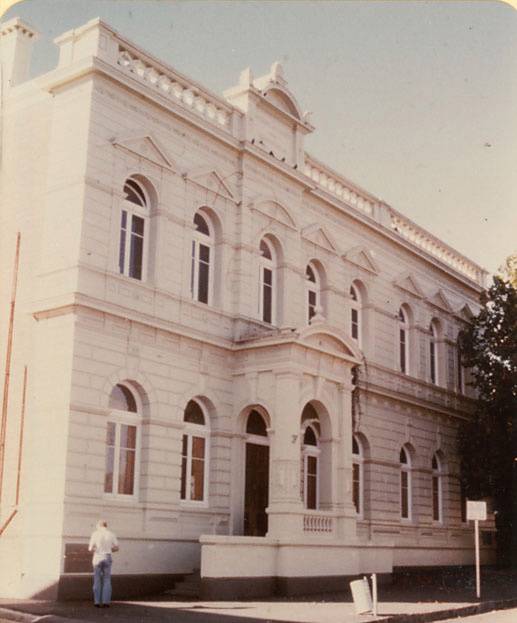| Back to search results » | Back to search page » |
|
FormerSchool Of Mines - Castlemaine Historic Area
Location27 Lyttleton Street,, CASTLEMAINE VIC 3450 - Property No B5268
File NumberB5268LevelState |
|
Statement of Significance
The foundation stone of the School of Mines, Castlemaine was laid on 18/12/1889 on the site of the old police court which had previously been used for classes. The architect was WC Vahland of Bendigo and the builder a Mr Dunstan. The school was built at a time when interest in applied science was high and its establishment also reflected the strong tradition of Mechanics Institutes and mining schools many British migrants had brought to Victoria.
Schools of mines were particularly popular in Victorian gold mining towns such as Bendigo, Ballarat and Castlemaine. The greatest enrolments were however in non-mining subjects as the school attempted to meet local demands and the needs of other industries. At the time it was opened the new building contained a laboratory, assay and balance rooms, art rooms, lecture hall, museum, Library and offices. Classes were also held in telegraphy. The school initially operated under the supervision of the technological commission but when this was disbanded in 1890 it came under the control of the education department. In 1926 the Castlemaine junior technical school was added to the rear of the building. Constructed of brick, the two-storey building has a rendered Italianate facade with a parapet. The vertical element through the facade is asymmetrically placed with a porch entrance in the lower storey and a pedimented tablet at parapet level. The windows all have semi circular arches and those in the upper storey, applied triangular pediments over them. The building was originally symmetrical about the front entrance and urns were located on the parapet. A further three bays were added in 1928, disrupting the symmetry.
Vahland was an important and influential architect in the Bendigo district and the Castlemaine School of Mines shows typical elements of his style. The building is also significant as an example of the provision of technical education for men and women at a time when post- primary education was not generally available.
Adopted from Heritage Victoria statement: 17/09/2012
Classified: 17/11/1983
Revised: 03/08/1998
Part of Castlemaine Historic Area B4894
Castlemaine grew as a result of the discovery of gold along Forest Creek in July, 1851. By December of that year the population on the field was greater than that of Melbourne. In 1852 Mr Templeton surveyed the township of Castlemaine and in 1853 the first auction of the town site was held.
The Castlemaine goldfield was allegedly the richest alluvial goldfield in the world. Such was the prosperity of the diggers that the townsfolk were optimistically expectant of Castlemaine becoming Victoria's second city. The prosperity of the diggers and the optimistic townsfolk is reflected in the high number of imposing buildings erected in the first few years of the town's life. However, the rich alluvial diggings were worked out within 15-20 years. From the 1870's the town's population began to drift away, but they left behind a rich legacy of the town's former prosperity in the form of its buildings.
Within the Castlemaine Historic Area may be found many items of significance. These range from intact nineteenth century streetscapes composed of imposing public buildings to simple miner's cottages. Within the historic area there are a number of identifiable component areas, each telling an important part of the history of Castlemaine. In addition, there are many other items of significance outside of these areas, but still within the historic area. These include the former steam flourmill, the Church of England, the Congregational Church and Forest and Barkers Creeks.
Despite the town's topographical confinements to the valley of the two creeks, the wide streets and large buildings convey an atmosphere of grand spaciousness in this central Victorian goldfields town.
Historic Area Classified: 01/12/1982
Group
Mining and Mineral Processing
Category
School - Technical




